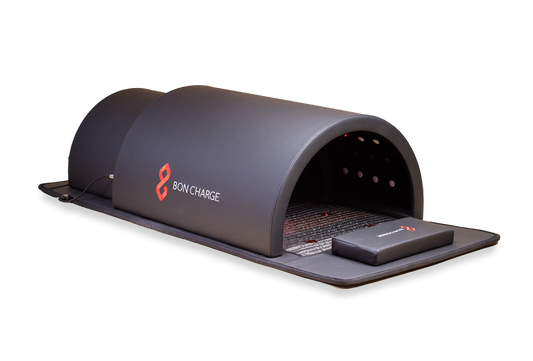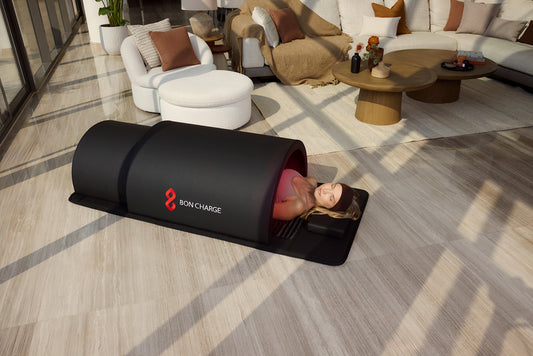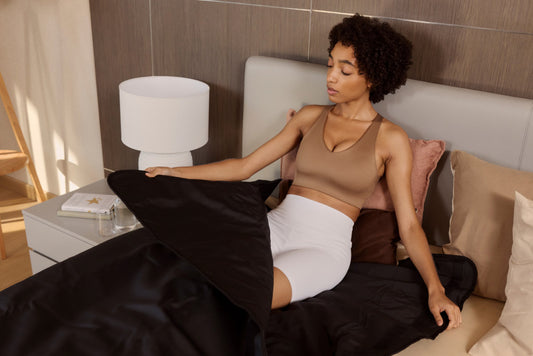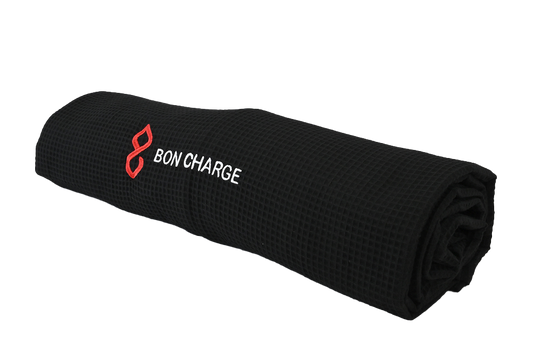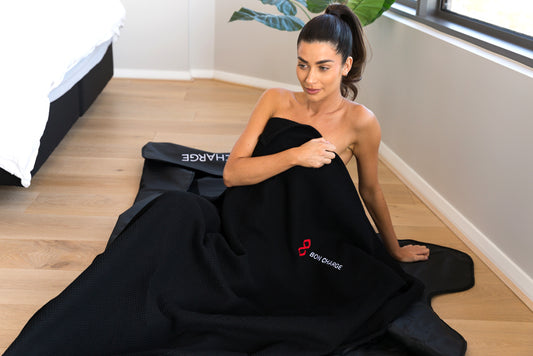7 Science-Backed Infrared Sauna Benefits – And Why “Head Out” May Be Better
Ana Martins, PhDYou might have seen health experts or biohackers posting from their luxurious home saunas, sharing all the impressive benefits. They aren’t wrong. The benefits of saunas are backed by science, but there’s something even the most trusted experts don’t really talk about: the practical problems that can make a sauna, well, not very practical.
And no, they have nothing to do with the unrealistic cost of regularly accessing a sauna or building one at home!
If you've been curious about getting on the sauna train, keep reading as we uncover everything you need to know — the good, the challenging, and a surprisingly simple solution that's changing everything.
(Read until the end because we’ll also share a few hidden risks that most people never considered before — literally — diving in.)
Why Is Infrared Sauna Making So Much Noise?
At first glance, infrared saunas might not seem that different from their traditional counterparts, but once you understand how they actually work, it becomes clear why so many people are making the switch.
Traditional saunas heat the air around you to temperatures between 160–195°F, creating that intense, sometimes overwhelming environment many of us remember from spa visits.
Infrared saunas work differently: they use specific light wavelengths to warm your body directly at more comfortable temperatures (typically 120–140°F). This direct heating method allows for longer sessions while still delivering benefits. Think of it as getting the wellness benefits of infrared heat, without feeling like your face is melting!
7 Science-Backed Benefits of Infrared Sauna Use
1. Enhanced Muscle Recovery and Athletic Performance
If you're active, whether that's CrossFit, yoga, or weekend hiking, this benefit might change how you think about recovery. Infrared heat energises inner flow, helping support natural renewal processes after physical activity. Research published in 2015 demonstrated that post-exercise infrared sauna sessions significantly enhanced muscle recovery from maximal endurance performance1.
2. Post-Workout Discomfort
For those avoiding working out due to downtime, infrared sauna offers a gentle approach to ease soreness. Studies show that 20 minutes of post-exercise infrared sauna decreased subjective muscle soreness after resistance training2.
3. Stress Recovery and System Balance
A 2024 study found that infrared sauna therapy at moderate temperatures (80℃ or 176F) promotes balance and calm3. The quiet, warm environment naturally encourages mindfulness, making sauna time active recovery for both body and mind.
4. Better Quality of Life
Research has shown that infrared sauna bathing can improve quality of life4–6. The physical and mental relaxation extends well beyond the session itself.
5. Skin Health Support
Infrared sauna helps support natural skin functions at more controlled temperatures than traditional saunas. However, those with skin or health conditions should be cautious, as heat may aggravate certain conditions7.
6. Better Sleep Quality
Many regular users report improved sleep quality after incorporating infrared sauna sessions. While more research is needed8, the relaxation response combined with natural cool-down may prepare your body for rest.
7. Clarity and Wellness
Sauna sessions encourage mindfulness and stress relief. Many people report their clearest thinking happens during or after a session.
The “Head In” Problem That Sauna Research Doesn’t Measure
All those impressive benefits only matter if you can stick with a sauna routine. Fully immersing yourself — head to toe — can cause issues:
- Hair and Beauty Concerns: Heat can damage hair, causing frizz and requiring frequent washing.
- Comfort and Accessibility: Saunas can feel claustrophobic. Contact lens wearers must remove them, and glasses often fog or suffer heat damage.
- Time and Logistics: Access is costly and inconvenient between memberships or home installations.
- Session Limitations: Intense facial heat limits sessions to 10–15 minutes.
The Infrared Sauna Blanket Solution
Infrared sauna blankets deliver the same wavelengths and benefits as cabins, but with your head outside the heat zone. This design solves many challenges:
- Protects hair from heat damage
- Comfortable for contact lenses and glasses
- Better temperature control
- Flexible exposure — legs, torso, arms in or out
- Longer sessions (20–45 minutes)
- Convenient at-home wellness routine
- Lower investment than traditional sauna installations
Other Important Safety Considerations
- Hydration: Always drink water before, during, and after sessions.
- Health Conditions: Consult a healthcare professional before starting.
- Skin Sensitivity: Start with shorter, cooler sessions to adapt.
- Pregnancy & Fertility: Heat exposure can affect sperm count and is not advised when trying to conceive9.
- Listen to Your Body: Stop immediately if you feel discomfort.
Bottom Line
Infrared sauna benefits are real, but only valuable if you can maintain them long-term. For many, sauna blankets make it possible to enjoy the benefits without the downsides of traditional saunas.
When choosing a sauna blanket, quality matters. Non-toxic, low-EMF, premium-grade materials with precise temperature control — like the BON CHARGE Sauna Blanket — are trusted by leading wellness experts such as Dr. Mark Hyman, Dr. Gabrielle Lyon, and David Asprey.
Always consult your healthcare professional before beginning any new wellness routine. Results may vary. Always read the directions for use.
References
- Mero, A., Tornberg, J., Mäntykoski, M. & Puurtinen, R. Effects of far-infrared sauna bathing on recovery from strength and endurance training sessions in men. SpringerPlus 4, 321 (2015).
- Ahokas, E. K., Ihalainen, J. K., Hanstock, H. G., Savolainen, E. & Kyröläinen, H. A post-exercise infrared sauna session improves recovery of neuromuscular performance and muscle soreness after resistance exercise training. Biol. Sport 40, 681–689 (2023).
- Podstawski, R. et al. The influence of extreme thermal stress on the physiological and psychological characteristics of young women who sporadically use the sauna. Front. Public Health 11, (2024).
- Falck, J., Nygårdh, A., Rolander, B., Jonasson, L.-L. & Mårtensson, J. Dealing with lipoedema: women’s experiences of healthcare, self-care, and treatments — a mixed-methods study. BMC Womens Health 25, 171 (2025).
- Beever, R. The effects of repeated thermal therapy on quality of life in patients with type II diabetes mellitus. J. Altern. Complement. Med. 16, 677–681 (2010).
- Cho, E.-H. et al. Dry sauna therapy is beneficial for patients with low back pain. Anesth. Pain Med. 14, 474–479 (2019).
- Hannuksela, M. L. & Ellahham, S. Benefits and risks of sauna bathing. Am. J. Med. 110, 118–126 (2001).
- Cristiano, L. Use of infrared as a complementary treatment approach in medicine and aesthetic medicine. Asploro J. Biomed. Clin. Case Rep. 2, 77 (2019).
- Garolla, A. et al. Seminal and molecular evidence that sauna exposure affects human spermatogenesis. Hum. Reprod. 28, 877–885 (2013).


